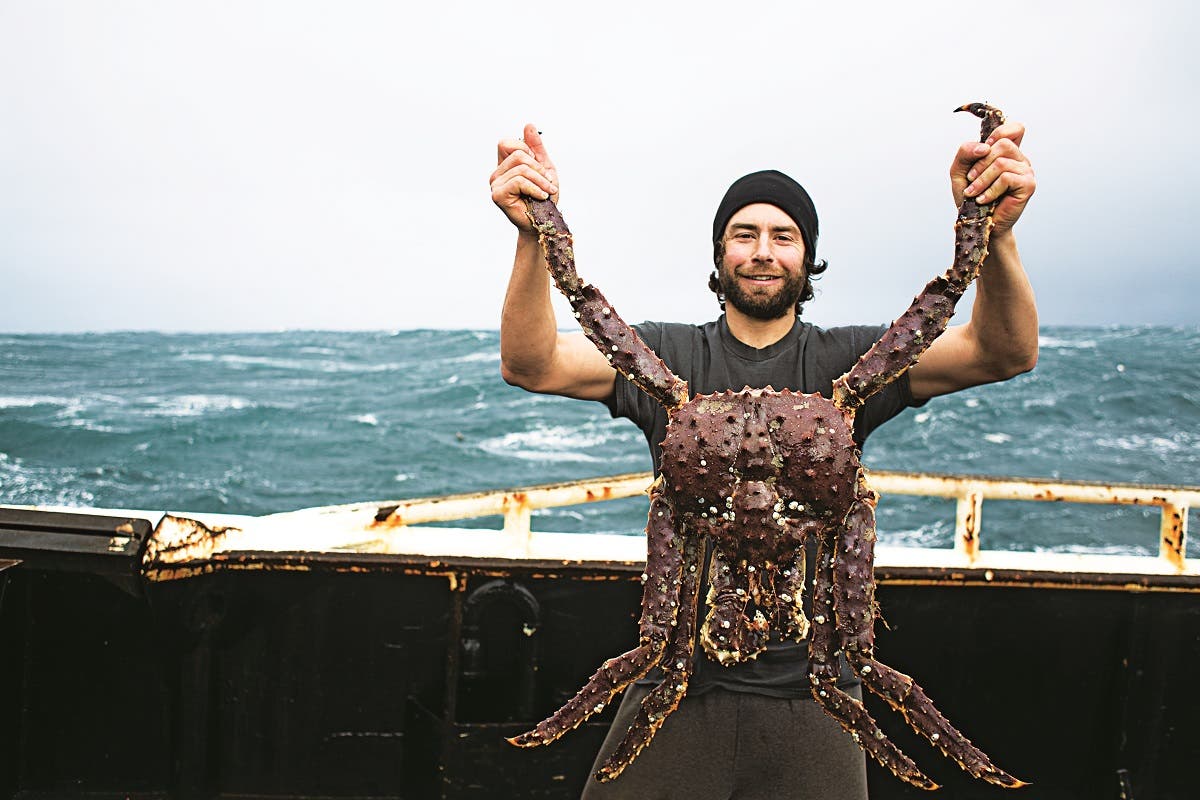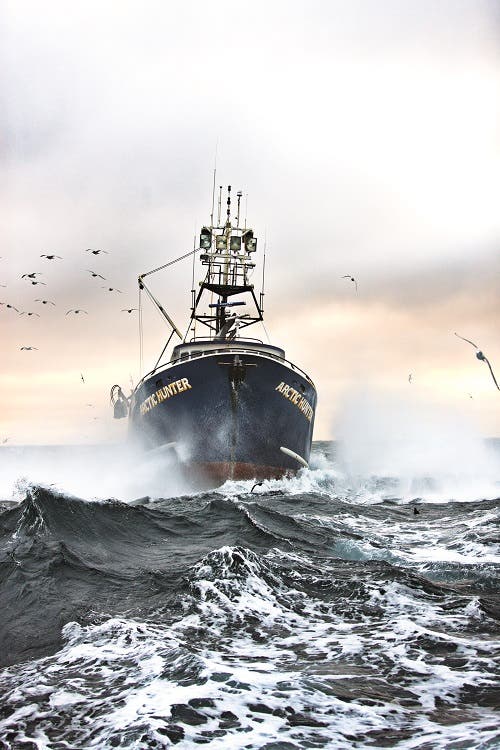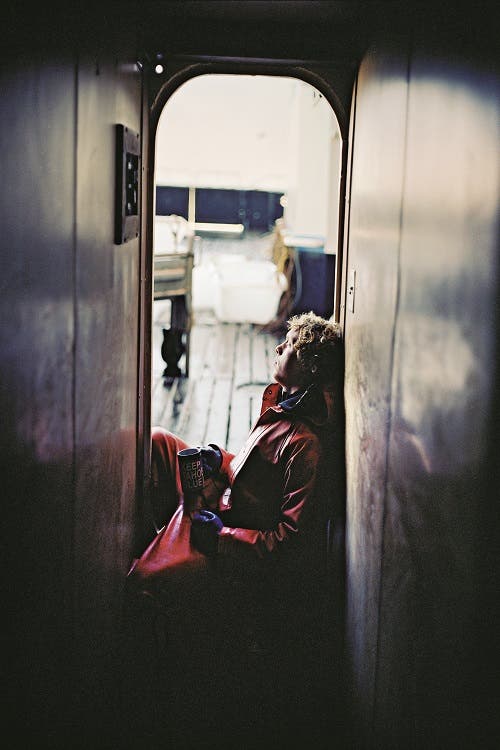
Polar Harvest
For one fisherman working northern waters, sweet, succulent Alaskan crab is a reason to feast
It's the beginning of a brutally cold crab-fishing season in January off the coast of Alaska, and the sea is steaming from the clash of 18-degree air and 33-degree seawater. Freezing spray coats every inch of our boat with a translucent layer of ice. On days like this, crabs must be landed quickly and sorted into the onboard holding tanks before their limbs freeze and snap off like deadwood. Our ship, the Rollo, is 107 feet long, with a royal blue hull that towers above the water, guarding against the notoriously huge waves of the Bering Sea. The six-man crew, of which I am a deckhand, includes a cook, an engineer, and a deck boss, but all double as fishermen during the harvest.

Our first crab pot of the day—a seven-by-seven-by-three-foot cage—soars toward the surface, pulled by a line that pops and whines as the pot ascends. Forty-eight hours earlier we baited it with chopped herring, two whole codfish, and a jar that slowly trickles out sardine oils. If we're lucky, the pungent scent will have attracted our quarry: Chionoecetes opilio, or opies, as we call them. Snow crabs. They're nomadic crustaceans that scurry in huge schools across the seafloor, feasting on dead fish and other invertebrates, including members of their own species. They're highly prized for their sweet, succulent leg meat.
The pot explodes out of the water and slams wildly against the side of the boat. A thousand sharp, slender jointed legs protruding through the webbing are the telltale sign of an exceptional catch, and we all erupt in hoots and hollers of triumph.
Once on board, the pot's contents are dumped into a spiny heap that could fill a truck bed. The pile writhes as the opies try to untangle their daddy longlegs appendages, and all hands step up to separate the undersize crabs and females from the legal-size males. We drop legals into a holding tank below deck and the rest into a chute leading back to the sea.
Later in the year, in October and November, we'll fish king crabs, enormous creatures weighing seven pounds and sometimes more, whose purple-brown glossy shells are covered in sharp spines. But these opies, which we fish from January to March, are just one to two pounds each. They have smooth shells, foot-long slender legs, and humanlike faces, their rigid mouths set in an eternal expression of indifference. There is a window of less than two seconds when picking up a crab before a viselike pincher will seize your finger, so we sort quickly, measuring each crab with a plastic yard stick to determine its fate.

Two massive wells beneath the hatches keep the crabs alive on board. On a good trip, we can fill the tanks to their combined capacity of 180,000 pounds in as little as 72 hours of around-the-clock work. We'll deliver the crabs alive to processors in Dutch Harbor, where they'll quickly be butchered, the legs and claws separated from the body in clusters that will be steamed, frozen in brine, and shipped to grocery stores and restaurants around the world.
Even though we're miles from the nearest restaurant ourselves, one of the perks of being a commercial crab fisherman is that the luxurious meat we're being paid to harvest is also a key component of our maritime diet. Few people on earth get the chance to savor Alaskan crab this fresh. Aboard the Rollo, between pulling crab pots, we devour panko-encrusted crab cakes, crab ceviche layered with fresh cilantro, crab-topped pizzas, crab with spaghetti, crab with eggs over easy, crab everything—you name it, we've tried it. Every day, even in 30-foot seas when the kitchen is awash with utensils that have fallen to the floor, Brian, the ship's cook, boils crab legs in a stockpot held firmly in place over an electric burner by a grid of metal brackets and sets them out on the galley table with melted butter for snacking. Chilled to the bone, exhausted, and hungry, we crack those tough shells with our bare hands, snapping the legs in two, and gorge on the sweet white meat within, blessing the sea for its rewards.
Keep Reading
Continue to Next Story










